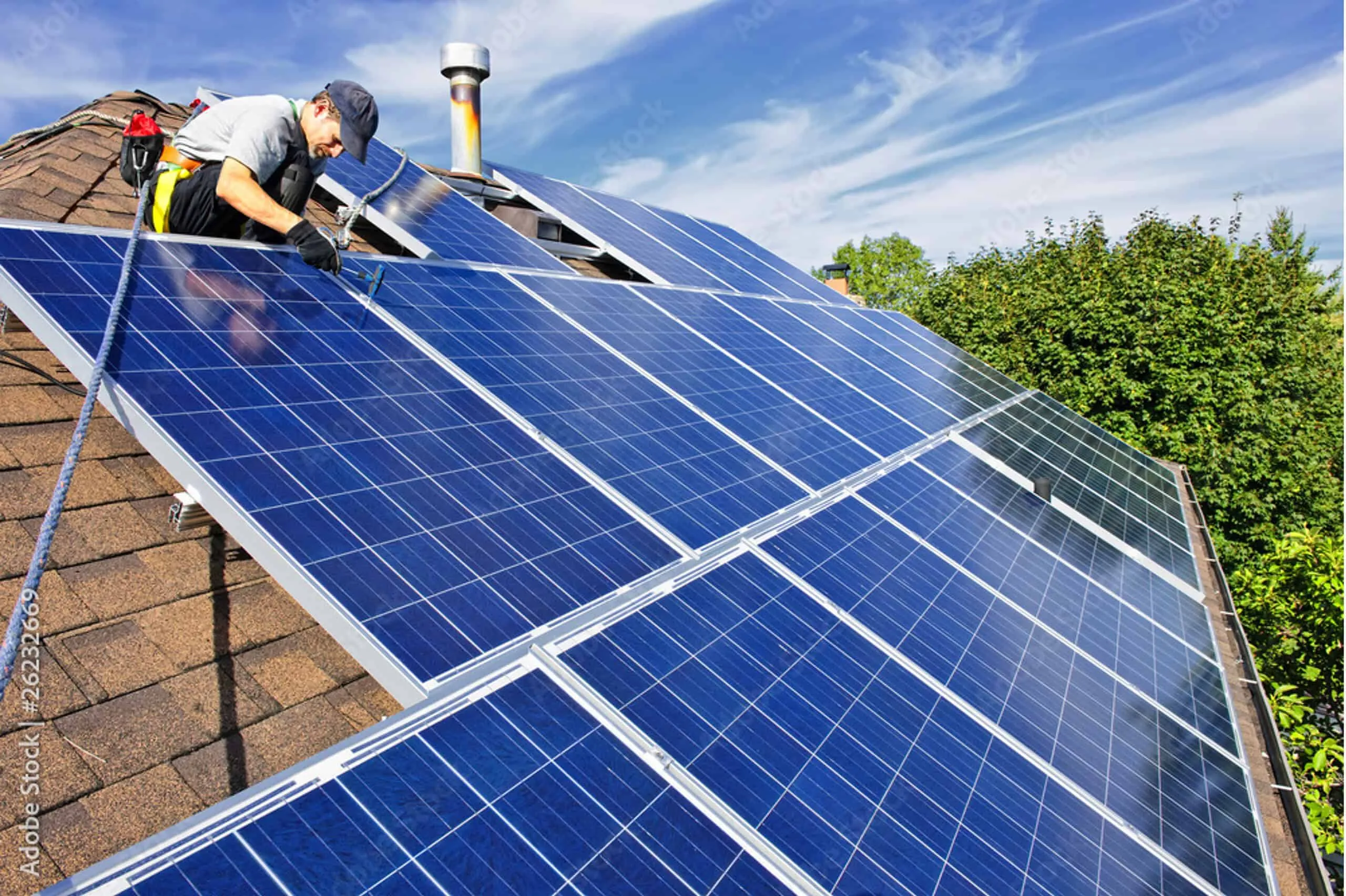There can be your advertisement
300x150
When Was Solar Energy Invented: Who, When and Why
Did you know that there are proofs that ancient Egyptians may have used solar energy for their own purposes almost 5000 years ago?
Evidently, they did not install solar panels on rooftops like people do today. But it seems that they could understand solar energy at a very basic level.

It took thousands of years for people to reach the use of solar energy as a renewable resource. However, the history of solar energy starts only about 200 years ago.
Want to know when solar energy was invented, who invented it and why? We will thoroughly review the timeline of solar energy over the last 200 years to show you how it was first founded and how it evolved over time.
Here is almost everything you need to know about this type of green energy and its evolution.
Discovery of the Photovoltaic Effect
Many point to 1839 as the year solar energy was invented. It was the year when French physicist Edmond Becquerel discovered the photovoltaic effect.
What is the photovoltaic effect? Essentially, it's a process where light or radiant energy is used to generate an electric current. The discovery of the photovoltaic effect laid the foundation for several solar devices in the second half of the 19th century.
For example, in the 1860s French mathematician Augustin Mouchot used what Becquerel discovered about the photovoltaic effect to create solar engines. Several inventors in the US followed Mouchot's example and created their own solar inventions in the 1880s and 1890s.
The First Solar Cell
While many other inventors were busy creating plans for the first solar devices, New Yorker Charles Fritts took a slightly different approach to this new interest in solar energy in the 1880s. In 1883, he created the first solar cell using selenium and coating it with gold.
This solar cell is now considered a very primitive version of what would become solar cells. It could generate an energy conversion efficiency of only 1–2%, which is insignificant compared to modern solar cells with efficiencies of 15–20%.
But Fritz's work in creating the first solar cell laid the foundation for the future. He deserves credit for introducing the era of solar energy in the US and inspired many researchers to begin working on improving his original solar cell design.
First Patents for Solar Cells
American inventor Edward Weston was one of the first researchers who built upon what Charles Fritts had created. Five years after Fritz introduced his solar cell to the world, Weston was able to obtain not one but two patents for solar cells.
Both cells patented by Weston were designed to convert radiant energy from the sun into electrical energy. Weston exposed these solar cells to light, which caused electrons in the solar cell to be released, thereby generating an electric current.
At around the same time as Weston made this discovery, Russian scientist Alexander Stoletov created a solar cell based on the photovoltaic effect. His discoveries led to American inventor Melvin Severy receiving US patents for devices containing solar cells that generated electricity through the photovoltaic effect in 1894.
First Thermoelectric Batteries
At the end of the 19th century, American inventor Harry Regan received a patent for thermoelectric batteries he was able to create. This was remarkable because these batteries were capable of storing heat that could then be used to generate electricity.
These thermoelectric batteries needed further development. However, they later helped scientists come up with ways to collect, store and distribute solar energy.
First Silicon Solar Cells
Between the end of the 19th century and the 1950s, there was no major progress in solar energy. But everything changed in the 1950s. Inventors from Bell Labs, Daryl Chapin, Calvin Fuller and Gerald Pearson created the first silicon solar cells.
They discovered that a silicon solar cell was more efficient than a selenium-based solar cell. They also found that the silicon solar cell could convert solar energy into electricity that could be used.
However, silicon solar cells were very expensive to produce and use, so they did not gain widespread adoption. Delaware University built one of the first solar buildings in 1973. But it was costly, so others did not follow its example.
The First US Attention to Solar Energy
By chance, the United States experienced an energy crisis in the 1970s, which really pushed solar energy forward. The US Congress passed the Solar Energy Research, Development and Demonstration Act of 1974. This showed the country's commitment to solar energy.
This led some Americans to start installing solar panels on their rooftops. But as the energy crisis ended, demand for solar energy began to decline in the 1980s.
However, despite this, the US government continued to research solar energy and develop new technologies. This led to a sharp drop in the cost of solar energy at the beginning of the 2000s and even today.
Today, you can install solar panels from a company at a very affordable price. That is why it's worth learning more about solar energy.
Knowing When Solar Energy Was Invented Matters
It's very important that people know solar energy didn't appear out of nowhere. It developed over decades.
Knowing when solar energy was invented should give you a new appreciation for it. It should also make you feel more comfortable with accepting solar energy.
Read more informative articles about solar energy on the rest of our blog.
More articles:
 Greenhouse: Designing the Optimal Environment for Growing
Greenhouse: Designing the Optimal Environment for Growing Greenstar 8000 Style – Stylish Boilers for Stylish Homes
Greenstar 8000 Style – Stylish Boilers for Stylish Homes Greenstyle: Sustainable Residential Complex by Castello Lagravinese Studio
Greenstyle: Sustainable Residential Complex by Castello Lagravinese Studio Greentown Cloud Mansion Model Hall by WJ Studio: Minimalism Inspired by Art, Nature and Modern Life
Greentown Cloud Mansion Model Hall by WJ Studio: Minimalism Inspired by Art, Nature and Modern Life House in Grid by Estudio VA arquitectos in La Plata, Argentina
House in Grid by Estudio VA arquitectos in La Plata, Argentina House in Grid by FGMF in Brazil
House in Grid by FGMF in Brazil Grove House in Asaka, Japan by Jun'ichi Ito Architect & Associates
Grove House in Asaka, Japan by Jun'ichi Ito Architect & Associates Growing Healthy Plants: Expert Tips and Tricks
Growing Healthy Plants: Expert Tips and Tricks